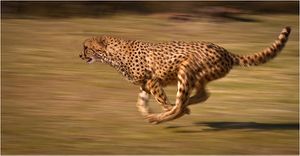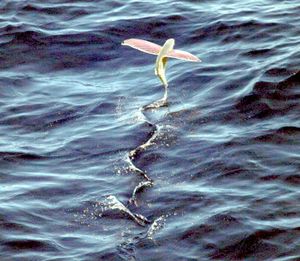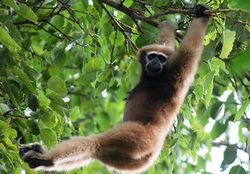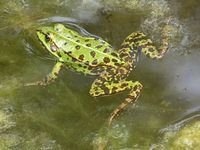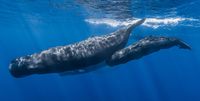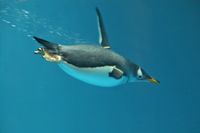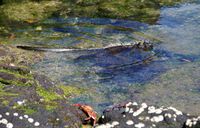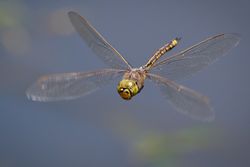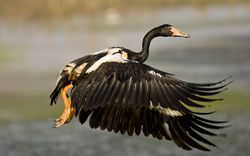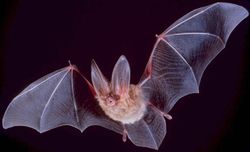الحركة في الحيوان

Animal locomotion, in ethology, is any of a variety of movements or methods that animals use to move from one place to another.[1] Some modes of locomotion are (initially) self-propelled, e.g., running, swimming, jumping, flying, hopping, soaring and gliding. There are also many animal species that depend on their environment for transportation, a type of mobility called passive locomotion, e.g., sailing (some jellyfish), kiting (spiders) and rolling (some beetles and spiders).
Animals move for a variety of reasons, such as to find food, a mate, a suitable microhabitat, or to escape predators. For many animals, the ability to move is essential for survival and, as a result, natural selection has shaped the locomotion methods and mechanisms used by moving organisms. For example, migratory animals that travel vast distances (such as the Arctic tern) typically have a locomotion mechanism that costs very little energy per unit distance, whereas non-migratory animals that must frequently move quickly to escape predators are likely to have energetically costly, but very fast, locomotion.
. . . . . . . . . . . . . . . . . . . . . . . . . . . . . . . . . . . . . . . . . . . . . . . . . . . . . . . . . . . . . . . . . . . . . . . . . . . . . . . . . . . . . . . . . . . . . . . . . . . . . . . . . . . . . . . . . . . . . . . . . . . . . . . . . . . . . . . . . . . . . . . . . . . . . . . . . . . . . . . . . . . . . . . .
Locomotion in different media
Animals move through, or on, four types of environment: aquatic (in or on water), terrestrial (on ground or other surface, including arboreal, or tree-dwelling), fossorial (underground), and aerial (in the air). Many animals—for example semi-aquatic animals, and diving birds—regularly move through more than one type of medium. In some cases, the surface they move on facilitates their method of locomotion.
Aquatic
Swimming
Benthic
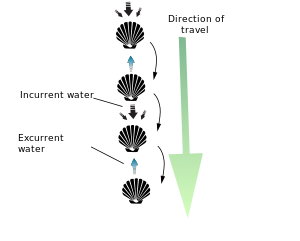
Aquatic surface
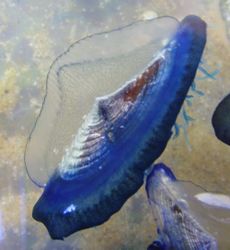
Velella, the by-the-wind sailor, is a cnidarian with no means of propulsion other than sailing. A small rigid sail projects into the air and catches the wind. Velella sails always align along the direction of the wind where the sail may act as an aerofoil, so that the animals tend to sail downwind at a small angle to the wind.[2]
الهيدرا : تعتمد على 3 طرق في الحركة : الزحف والشقلبة والسباحة بالاعتماد على (خلايا عضلية خاصة). دودة الأرض : تستطيع الحركة بواسطة أنسجة عضلية خاصة.
يوجد على كل قطعة من الناحية البطنية من جسم دودة الأرض)ماعدا القطعة الأولى والأخيرة(أربعة أزواج من الأشواك تساعد في الحركة وتتلخص طريقة الحركة بأن تثبت الدودة القسم الخلفي من جسمها بواسطة الأشواك، بينما تخفي أشواك القسم الأمامي في جيوب خاصة موجودة في جدار الجسم، ثم تمتد نحو الأمام بانبساط العضلات الطولية، وانقباض العضلات الدائرية التي تضغط على السائل السيلومي، فتدفع مقدمة الجسم إلى الأمام، وتثبتها في الأرض، بينما تختفي أشواك القسم الخلفي ثم تنقبض عضلاتها الطولية، وتنبسط عضلاتها الدائرية، فتنسحب مؤخرة الجسم خلف الجزء الأمامي، وبتكرار هذه العملية تتحرك الدودة.
نوع العضلات في الهيدرا ودودة الأرض
في الهيدرا تكون خلايا عضلية ودودة الأرض أنسجة عضلية.
Aerial
Active flight
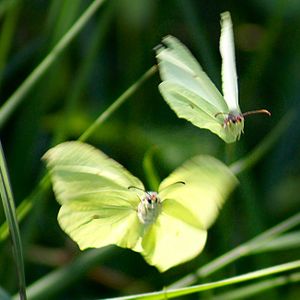
Gliding
Soaring
Examples of soaring flight by birds are the use of:
- Thermals and convergences by raptors such as vultures
- Ridge lift by gulls near cliffs
- Wave lift by migrating birds[3]
- Dynamic effects near the surface of the sea by albatrosses
Ballooning
Terrestrial
. . . . . . . . . . . . . . . . . . . . . . . . . . . . . . . . . . . . . . . . . . . . . . . . . . . . . . . . . . . . . . . . . . . . . . . . . . . . . . . . . . . . . . . . . . . . . . . . . . . . . . . . . . . . . . . . . . . . . . . . . . . . . . . . . . . . . . . . . . . . . . . . . . . . . . . . . . . . . . . . . . . . . . . .
Jumping
Peristalsis
Sliding
Due to its low coefficient of friction, ice provides the opportunity for other modes of locomotion. Penguins either waddle on their feet or slide on their bellies across the snow, a movement called tobogganing, which conserves energy while moving quickly. Some pinnipeds perform a similar behaviour called sledding.
Brachiation
Walking and running
Species have different numbers of legs resulting in large differences in locomotion.
Bipedal ostrich
Hexapedal stick-insect
Octopedal locomotion by a spider
Multi-legged millipede
Powered cartwheeling
تحت الأرض
الحركة الشجرية
Energetics
Passive locomotion
Passive locomotion in animals is a type of mobility in which the animal depends on their environment for transportation.[1]
Hydrozoans
العناكب
الحشرات
القشريات
Animal transport
Some animals change location because they are attached to, or reside on, another animal or moving structure. This is arguably more accurately termed "animal transport".
. . . . . . . . . . . . . . . . . . . . . . . . . . . . . . . . . . . . . . . . . . . . . . . . . . . . . . . . . . . . . . . . . . . . . . . . . . . . . . . . . . . . . . . . . . . . . . . . . . . . . . . . . . . . . . . . . . . . . . . . . . . . . . . . . . . . . . . . . . . . . . . . . . . . . . . . . . . . . . . . . . . . . . . .
Remoras
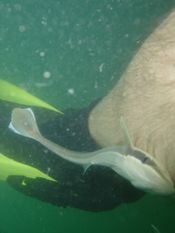
Angler fish
الطفيليات
الثدييات المائية
الطيور
تغيرات أثناء دورة الحياة
الوظيفة
الحصول على الطعام
Animals use locomotion in a wide variety of ways to procure food. Terrestrial methods include ambush predation, social predation, grazing. Aquatic methods include filterfeeding, grazing, ram feeding, suction feeding, protrusion and pivot feeding. Other methods include parasitism and parasitoidism.
طرق الدراسة
A variety of methods and equipment are used to study animal locomotion:
معارض
Coypu (Rodentia)
Frog (Anura)
Sperm whales (Cetacea)
Gentoo penguin (Aves)
Marine iguana (Reptilia)
انظر أيضاً
- Animal migration
- Animal navigation
- Feather
- Joint
- Kinesis (biology)
- Movement of Animals (book)
- Role of skin in locomotion
- Taxis
الهامش
- ^ أ ب "Animal locomotion". Encyclopaedia Britannica. Retrieved December 16, 2014.
- ^ McNeill Alexander, R. (2002). Principles of Animal Locomotion. Princeton University Press. ISBN 0-691-08678-8.
- ^ [Report of use of wave lift by birds by Netherlands Institute for Ecology]
للاستزادة
- McNeill Alexander, Robert. (2003) Principles of Animal Locomotion. Princeton University Press, Princeton, N.J. ISBN 0-691-08678-8
وصلات خارجية
قالب:Musculoskeletal physiology
خطأ لوا في وحدة:Authority_control على السطر 278: attempt to call field '_showMessage' (a nil value).
